 |
|
|
Hotel Chisca
The Hotel Chisca on S. Main Street opened on Christmas day in 1913. Constructed of concrete with a red brick facade, the nine story hotel sits at the Southeast corner of South Main Street and Linden (Dr. Martin Luther King Jr.) Avenue.1 It was named for Chisca, chief of the Chickasaw Indians who had lived in that area since before Hernando De Soto discovered the Mississippi river.
It was located in the downtown area of Memphis not far, and across, from the Gayoso Hotel, in a district that was born during the height of the railroad era and surrounded by both Union and Central stations.1 At that time the original Peabody Hotel was also located on Main, though further north at Monroe Street. The current one didn't open on Union Avenue until 1925.
Unlike the Peabody and Gayoso, the Chisca was considered a "second-tier" property, said to be simple, yet sturdy, solid and well done. Billed as a "popular priced" hotel, it boasted 400 rooms, a dining room, ballroom and meeting rooms and catered to Railroad travelers, and employees, and mule dealers, as well as entertainers.1
Dewey Phillips started in radio at Memphis' WHBQ in 1949. The station, originally located in the Claridge Hotel on N. Main, had moved to the Hotel Gayoso in 1942.4 From there Dewey hosted his Red, Hot, and Blue program for two hours six nights a week, and three on Saturday while working days running the record department at W. T. Grant.5 In 1953 WHBQ relocated to the Hotel Chisca when they built studios off the lobby on the mezzanine floor.4 Their space contained a reception area, offices and three glass-windowed broadcast booths clustered around a producer's booth. A steep ramp and handrails led to the producer's booth, which had windows looking into each broadcast booth.2 From there, in July of 1954, Dewey debuted Elvis' first recording, "That's All right, Mama" during Red, Hot and Blue and conducted the first on-air interview with him.6
Sam Phillips (no relation) had played the record for Dewey after recording it and Dewey had requested two copies and played it on the air around 9:30 or 10:00 the following night, believed to be July 8th. Peter Guralnick wrote, “the response was instantaneous. Forty-seven phone calls, it was said, came in right away, along with fourteen telegrams — or was it 114 phone calls and forty-seven telegrams? —he played the record seven times in a row, eleven times, seven times over the course of the rest of the program. In retrospect it doesn’t really matter; it seemed as if all of Memphis was listening as Dewey kept up his nonstop patter, egging his radio audience on, encouraging them to join him in the discovery of a new voice, proclaiming to the world that Daddy-O·Dewey played the hits, that we way uptown, about as far uptown as you can get, did anybody want to buy fur-lined duck? And if that one didn’t flat git it for you, you can go to. . . And tell ’em Phillips sent you!” 6
Elvis, fearing rejection had gone to a movie that night knowing that Dewey would play it. "I thought people would laugh at me, Elvis told C. Robert Jennings of the Saturday Evening Post in 1965. "Some did, and some are still laughing, I guess." When fetched from the theater by his parents after Dewey called for him down at the station for an interview, Peter also wrote, "I was scared to death," Elvis said. “I was shaking all over. I just didn’t believe it, but Dewey kept telling me to cool it, [this] was really happening.6
"Sit down, I'm gone interview you" were his first words to the frightened nineteen-year-old, Dewey told writer Stanley Booth in 1967. "He said, 'Mr. Phillips, I don't know nothing about being interviewed.' 'just don't say nothing dirty,' I told him. He sat down, and I said I'd let him know when we were ready to start. I had a couple of records cued up, and while they played we talked. I asked him where he went to high school, he said, ‘Humes.’ I wanted to get that out, because a lot of people listening had thought he was colored. Finally I said, 'All right, Elvis, thank you very much.' 'Aren't you gone interview me?' he asked. 'I already have,' I said. 'The mike's been open the whole time.' He broke out in a cold sweat." 6
Elvis would later visit the station several times and Dewey always made a fuss, announcing on the air that he was in the studio.6 He hosted several local events that Elvis appeared, including those at Ellis Auditorium and Russwood Park. On March 8, 1956, the Commercial Appeal advertised that Elvis would make an appearance in the hotel in the Chickasaw Ballroom on the 9th backed by the Sy Rose Orchestra. However, pictures believed to be from there show Scotty, Bill and DJ performing with him. Sy Rose, a piano player turner trumpet player was actually Seymour Rosenberg and in addition to being an area musician became a noted criminal defense attorney in addition to later managing Charlie Rich and others and representing Stax Records and Isaac Hayes.7
The Chickasaw Ballroom, according to Memphis Mafia member and Elvis associate Jerry Schilling, was the hotel’s basement lounge and since they served alcohol that night it was closed to minors. Years before he went to work for Elvis he had heard about this show. Though too young at the time but determined none the less, Jerry said he and a friend found a way to sneak around and managed to see Elvis and the show via a side hallway with a door to the stage. He wrote, "We watched as much of the first show as we could through the crack in that door, but the biggest thrill came after Elvis finished his first show, when he headed offstage right toward us. We scattered from the door just as he came through." 8
"He was sweating something fierce and a little out of breath—looking like he’d gotten a more intense workout than he did at any of the football games. I don’t know if he nodded at us or if he was just getting his hair back in place, but he acted like it was the most natural thing in the world for Frankie and me to be in that basement hallway. There wasn‘t a place to sit, so he just leaned up against one of the big basement pillars. He said to Jerry, "Get me a Pepsi, would you?" 8 In contrast to the pictures from at least one show, he described Elvis as wearing black pants and "red" jacket.
Elvis didn’t say much to Frankie and me, but he seemed perfectly comfortable to have us around. We hung around for the whole break between shows, and after a while there were other people around who wanted to talk to Elvis. He talked to them, but if he wanted another Pepsi, he got it from me or Frankie. The moment seemed special because it wasn‘t special—just him and us, standing around drinking soda. He'd just walked away from a screaming audience to stand out here in the hallway, Frankie and I were in the hallway, and it was no big deal.8
Several other locals have said they also remember an appearance at the Chisca, one reputedly the niece of Elvis’ 7th grade teacher, though she described the crowd there as small and no alcohol. Scotty though, has said he has no recollections of ever playing at the Chisca, in the basement or elsewhere.
In 1961 a larger Ballroom was constructed on the second floor of the hotel, the Grand Gold room, and many high school formals were held there. Additionally a swimming pool with sundeck was added and the adjacent 90 room Chisca Plaza Motor Lodge was built on the Pontotoc Avenue side. It offered ground and sub level parking and four floors of hotel rooms above.1
Another Memphis Mafia member, former classmate and friend of Elvis', Marty Lacker, said that WHBQ was located in the Chisca until the early 1960s when he worked there. It later moved to the WHBQ-TV building that had been built on Highland Avenue, an area referred to as east Midtown. He doesn't recall a ballroom in the basement, but was in the Army stationed in Germany in 1956. After an unsuccessful try at TV for WHBQ, Dewey was dismissed from the station in 1958. His relationship with Elvis, much like his career and also health from substance abuse, deteriorated over time. He died in 1968, coincidentally at the same age as did Elvis 9 years later, 42.
In the 60's the area deteriorated and by the early 1970s the Hotel closed. The property and a newer addition called the Chisca Plaza Motor Court became a virtual gift from the Snowden-Todd family to the Church of God in Christ in 1972.2 They had originally planned to redevelop it along with other downtown properties but instead only used lower floors of the hotel for their headquarters. Unfortunately the upkeep was expensive and they allowed the upper floors and main structure to deteriorate. By the late 1990s it was abandoned and had remained since.2
The area is now part of the city's South Main Historic District which has been listed on the National Register of Historic Places since 1982 for its historic and architectural importance to Memphis. Several attempts at plans for restoration of the hotel and property had failed and the Neighborhood Association has been opposed to its demolition. Fortunately in 2012 the building was saved when after more than a year of negotiating the Church of God in Christ sold the properties for $900,000 to Main Street Apartment Partners, LLC. A local public-private partnership, they are in the process of a twenty-plus million dollar project to restore and convert it into 150 to 195 apartments with street-level retail.2
Considered unsalvageable, developers plan to take out the ballroom and replace it with an urban-style landscaped courtyard.1 There had been hopes however to preserve the original booths that housed WHBQ. Through the efforts of volunteers and people like Mike McCarthy, the artist and filmmaker turned preservationist, this has been realized.9 The original broadcast booths, stripped down to acoustic tile walls and ceilings, were intact in the recesses of the mezzanine that once housed the radio station. Though they weren't sure which booth was used to air by Phillips' show in 1954,2 Sam Phillips and George Klein had previously identified the actual one for Peter Guralnick around 1998. McCarthy and volunteers have since meticulously removed the booths and stored them until they can be reconstructed in an exhibit that would be more accessible to the public, possibly somewhere in the Chisca.10
Page added May 24, 2013 1 according to the Project
Narrative for the Historic Hotel Chisca Renovation for the Downtown
Memphis Commision - March 20, 2013
Buzz Cason has been a friend of Scotty's for many years.
In 1957 he formed The Casuals, one of the first rock bands in Nashville.
While promoting their record they drove to Memphis and met George Klein
and Wink Martindale. Wanting to meet their idol Elvis, George arranged
an interview with Dewey Phillips assuring them that Elvis would be
there, and he was. After their interview with Dewey they ran into Elvis in
the corridor of the Chisca where he posed with them for a few photos, talked
for awhile and wished them luck with their "new jobs." He also told
them about the house he had just purchased on Highway 51 in Whitehaven,
Graceland, and invited them over to view it with instructions to tell
Uncle Vester to let them up. They drove over the next day and did
just that posing on the steps and peeked into the windows. Later they
drove by his home on Audubon Drive also. Over the next four decades, Buzz worked successfully as a performer, songwriter, producer, actor and recording studio pioneer. He wrote the hit song
Everlasting Love, published the award-winning songs Honey and
Little Green Apples, sang with Roy Orbison, Kenny Rogers, Brenda Lee and Jimmy Buffet, and recorded with such artists as Olivia Newton-John, Emmylou Harris, Merle Haggard and The Gatlin Brothers. section added April 7, 2015 Sandra Boettcher's
photo Yesterday
I saw a photo making the rounds on Facebook and received an email from
Mike Pfister about it that I didn't read until today. With Mike's
permission we've shared it and his Mother's story here:
I own this picture. Patsy Presley and my mom went to Central High together and Patsy sold this photo to my mom in '57 or so. My mom, Sandra (Boettcher) Pfister kept it in her wallet for years then it went into our family photo album. Finally about 10 years ago she gave it to me. I believe it is a very important piece of Rock and Roll history at least where Elvis and Scotty are concerned. I've scanned it in several different qualities.
I'm the one posting the low-res scan of it on Facebook on some Elvis pages just in an effort to tell my mom's story. I kept coming upon your Scotty Moore site whenever I'd research the
Chisca. I figured since you've already stock-piled all of the known existing photos of that Mar 9, 1956 show, you and Scotty would probably want this one too.
Thank You,
PS. My mom also dated David Moore (Scotty's nephew) for a while back in the
50's.
section added July 23, 2015
|
|
|
All photos on this site (that we didn't borrow) unless otherwise indicated are the property of either Scotty Moore or James V. Roy and unauthorized use or reproduction is prohibited. |
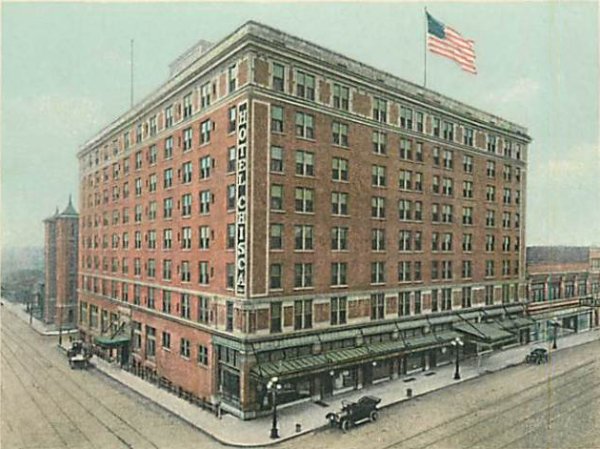
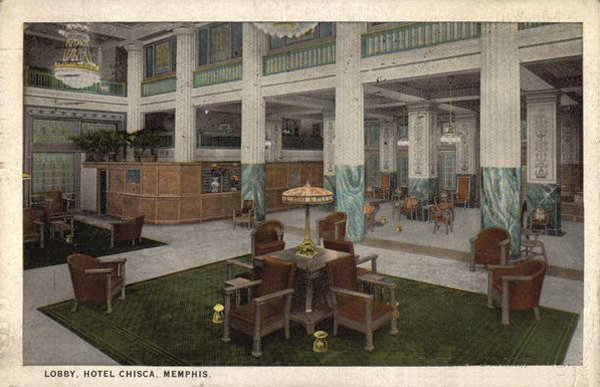
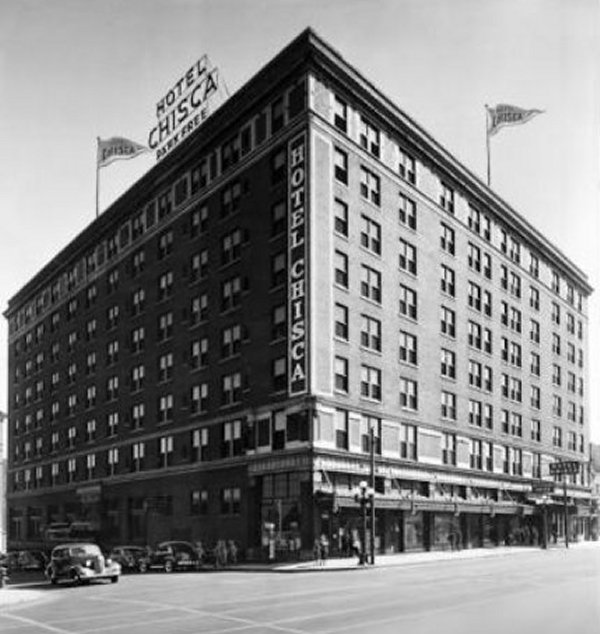
%20South%20Main%20and%20Pontotoc,%201948.jpg)
,%201955.jpg)
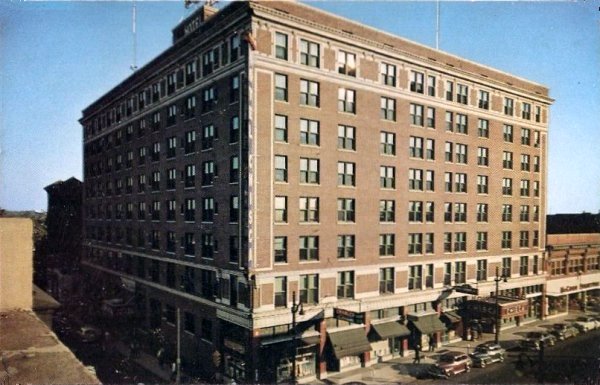
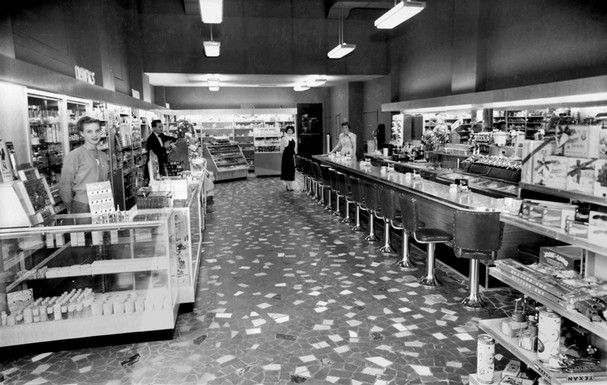
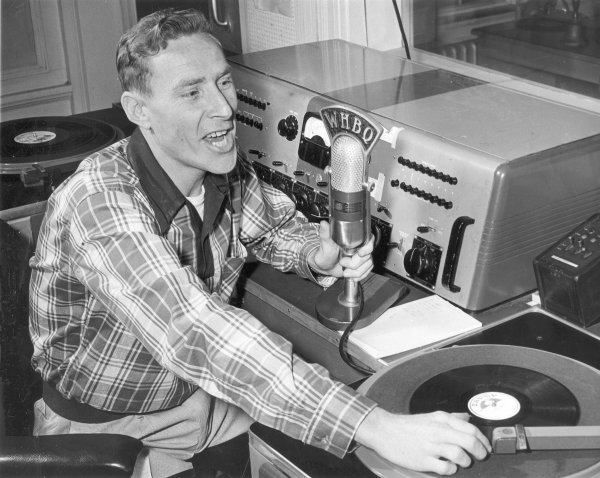
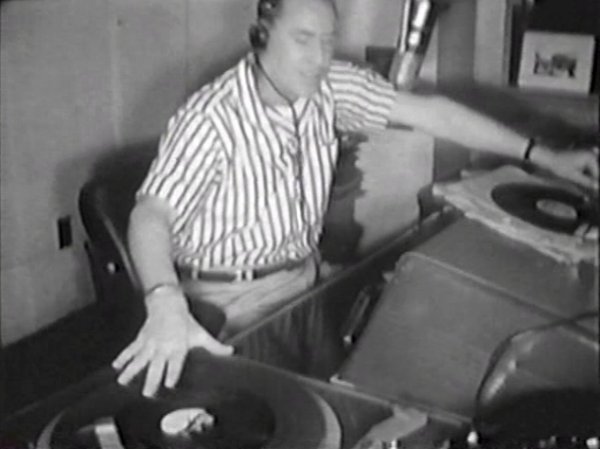

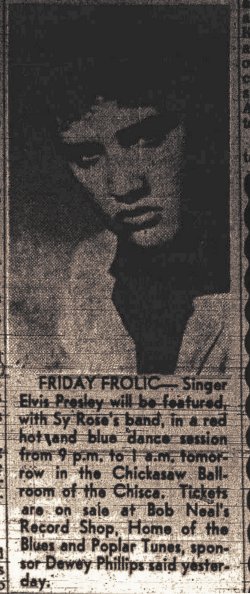


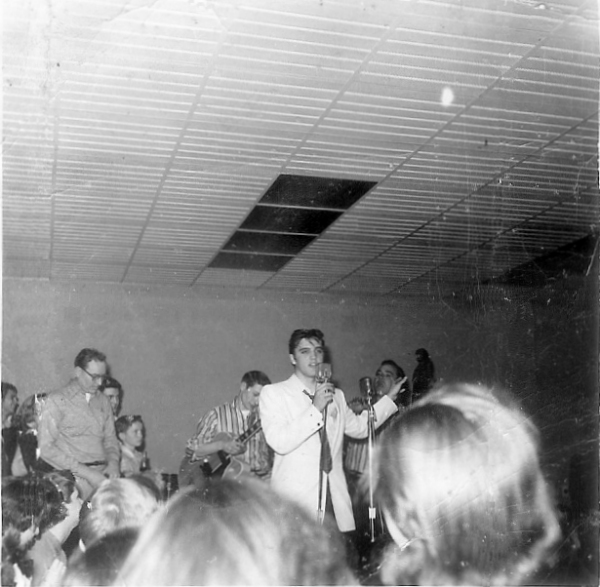
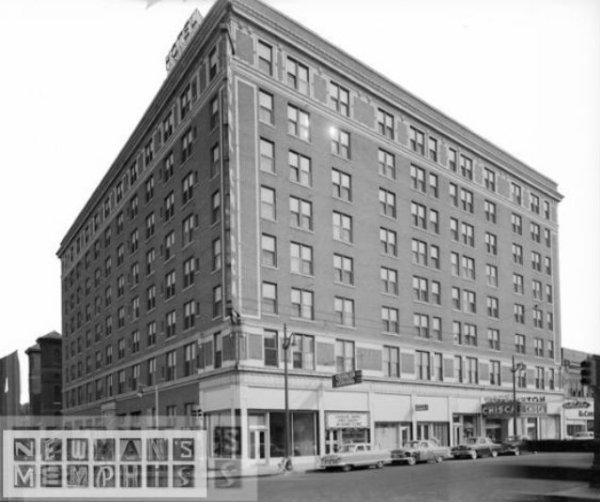
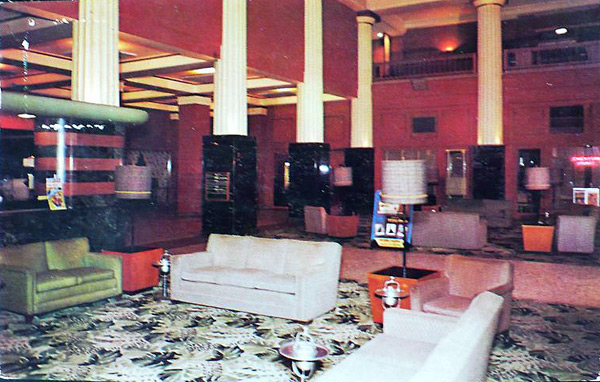
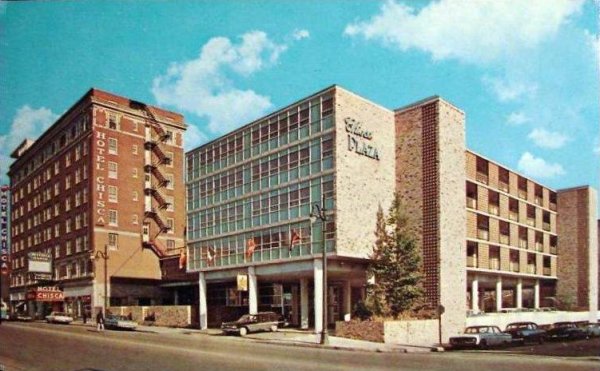
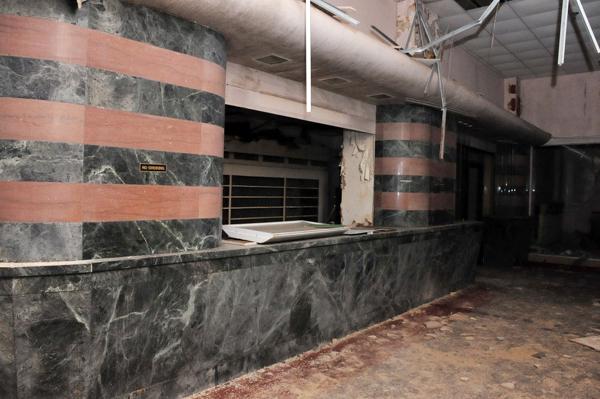
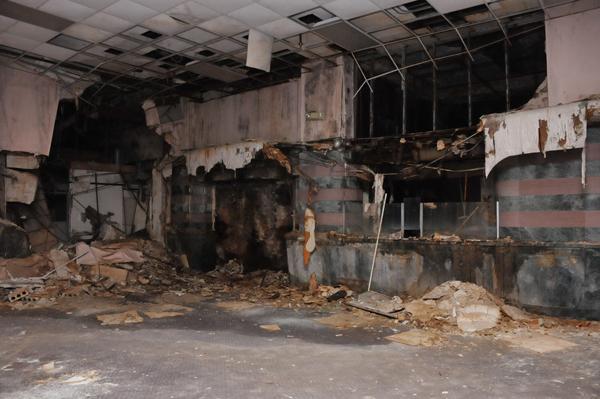




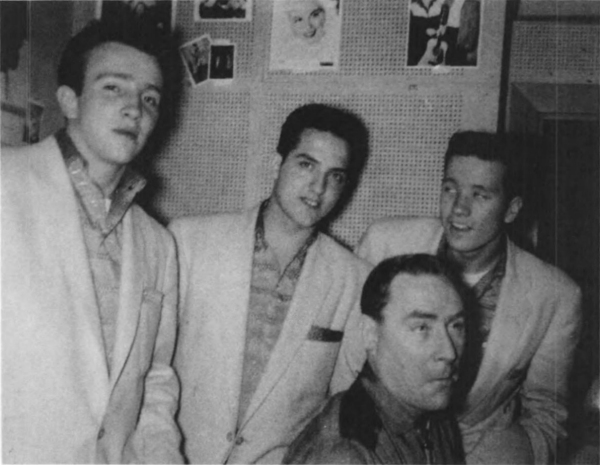
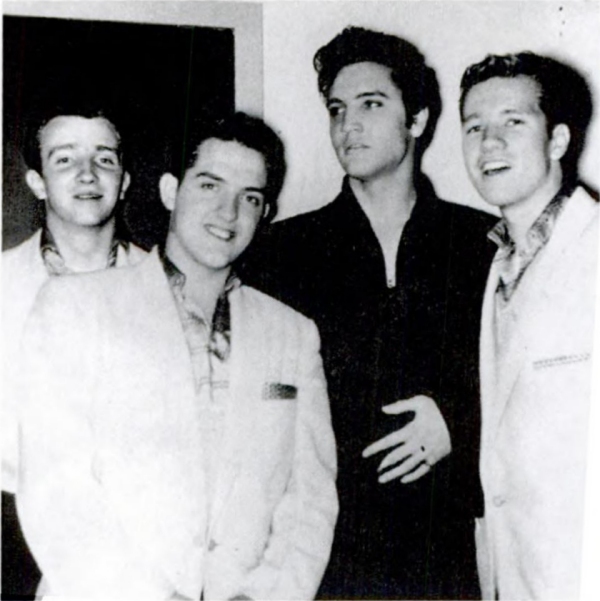
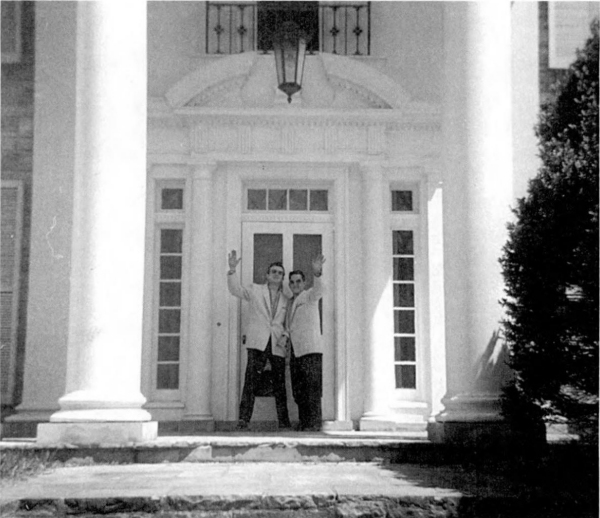
.jpg)

